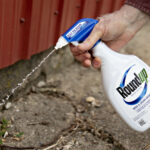As the 2007 Atlantic hurricane season became official, Colorado State University’s well-known weather researcher William Gray stood by his earlier April prediction that this will be a storm period “much more active” than normal.
His team estimates that 2007 will have about 9 hurricanes (average is 5.9), 17 named storms (average is 9.6), 85 named storm days (average is 49.1), 40 hurricane days (average is 24.5), 5 intense (Category 3-4-5) hurricanes (average is 2.3) and 11 intense hurricane days (average is 5.0).
The Atlantic hurricane season runs from June 1 through November 30, with peak activity occurring August through October.
The forecast by Gray and his research partner, Phil Klotzbach, is in line with others that agree the season will be an active one.
Gray and Klotzbach said there was a 74 percent chance of a major hurricane making landfall somewhere on the U.S. coast.
There is a 50 percent chance of a major hurricane making landfall on the East Coast, including the Florida Peninsula, according to the new forecast.
“We have maintained our forecast from our early April prediction due largely to the continued trend towards cooler equatorial Pacific sea surface temperatures,” Gray explained. “We expect either cool neutral or weak-to-moderate La Niña conditions to be present during the upcoming hurricane season. Tropical and North Atlantic sea surface temperatures remain well above their long-period averages.”
Experts at the National Oceanic and Atmospheric Administration (NOAA) Climate Prediction Center say there is a 75 percent chance that the Atlantic hurricane season will be above normal this year.
NOAA scientists predict 13 to 17 named storms, with seven to 10 becoming hurricanes, of which three to five could become major hurricanes of Category 3 strength or higher, according to retired Navy Vice Adm. Conrad C. Lautenbacher, Ph.D., undersecretary of commerce for oceans and atmosphere and NOAA administrator.
Last year, seasonal hurricane predictions proved to be too high when an unexpected El Niño rapidly developed and created a hostile environment for Atlantic storms to form and strengthen.
“There is some uncertainty this year as to whether or not La Niña will form, and if it does how strong it will be,” said Gerry Bell, Ph.D., lead seasonal hurricane forecaster at NOAA’s Climate Prediction Center. If La Niña develops, storm activity will likely be in the upper end of the predicted range, he added.
Two teams of researchers at North Carolina State University this season released separate results for the first time.
One team projected that 16 to 17 named storms would form in the Atlantic basin, including eight to nine hurricanes. Two or three hurricanes will make landfall on the East Coast, while one or two will strike the Gulf Coast, according to team predictions.
“Everything shows that it’s going to be a much busier year than last year,” said Len Pietrafesa, a professor of oceanic and atmospheric science at N.C. State who contributed to the team.
The second squad of N.C. State forecasters estimated the Atlantic basin will brew 12 to 13 named storms and eight to nine hurricanes, including four or five major hurricanes. These researchers said there is a 75 percent chance a hurricane will make landfall along the eastern seaboard and an equally strong chance that a hurricane will hit the Gulf of Mexico coastline.
“All in all, it’s going to be an active year,” agreed lead researcher Lian Xie, an N.C. State professor of meteorology and physical oceanography.
This team also estimated a 56 percent chance that a major hurricane will strike the Gulf Coast, and a 10 percent chance of a major hurricane striking the southeast coast.
“We’re seeing a very active Gulf of Mexico, similar to some of the past active seasons,” Xie said, adding that the eastern seaboard will have above-average activity in the south and a calm season in the north.
Last year, there were five hurricanes, two of them major, but none hit the U.S. Atlantic coast.
In 2005, four hurricanes including Katrina hit the U.S. coast.
Was this article valuable?
Here are more articles you may enjoy.

 Bayer Gets Supreme Court Hearing in Challenge to Roundup Suits
Bayer Gets Supreme Court Hearing in Challenge to Roundup Suits  OpenAI And Microsoft Sued Over Murder-Suicide Blamed on ChatGPT
OpenAI And Microsoft Sued Over Murder-Suicide Blamed on ChatGPT  Storm Goretti Batters Europe With Violent Winds, Power Cuts
Storm Goretti Batters Europe With Violent Winds, Power Cuts  Billionaire NFL Owner Suing Over Billboards Near His SoFi Stadium
Billionaire NFL Owner Suing Over Billboards Near His SoFi Stadium 